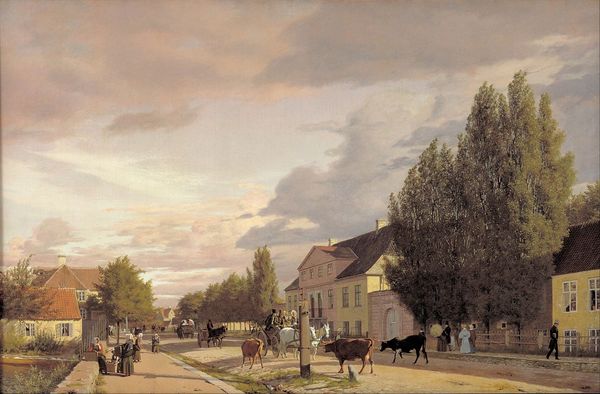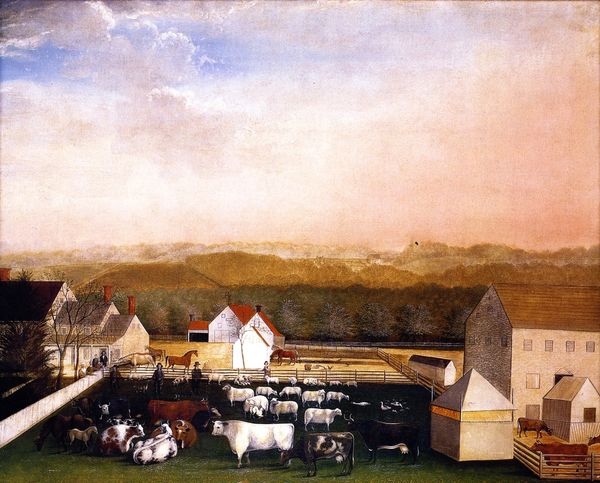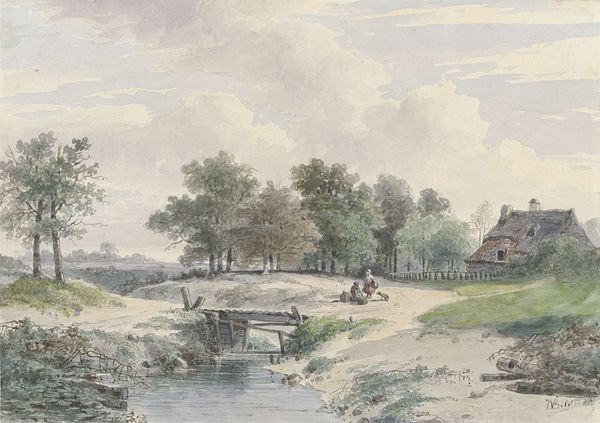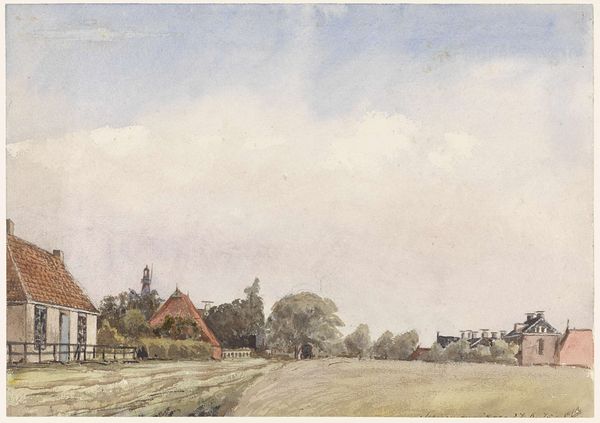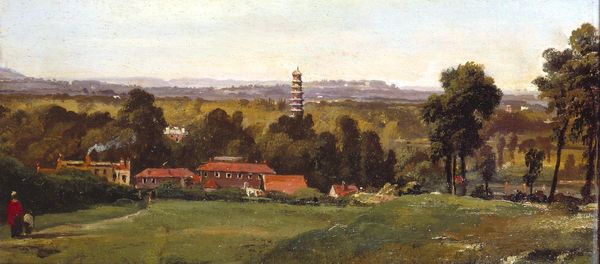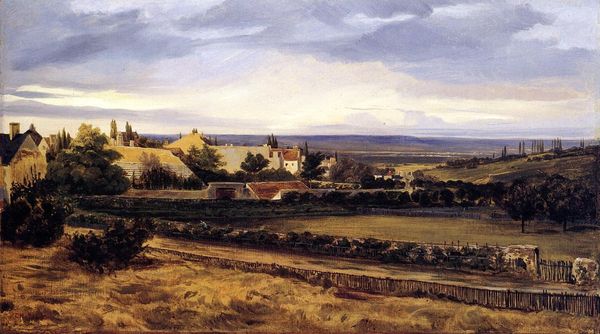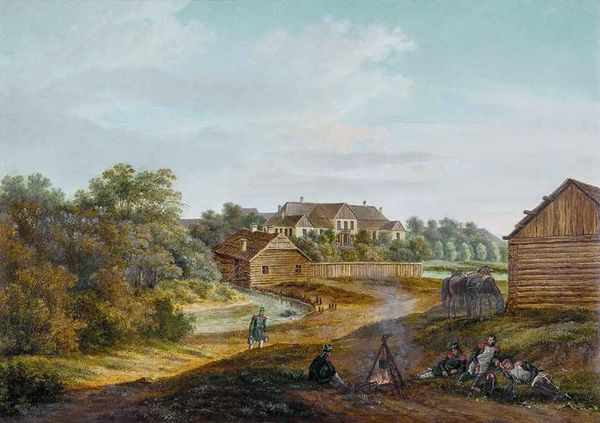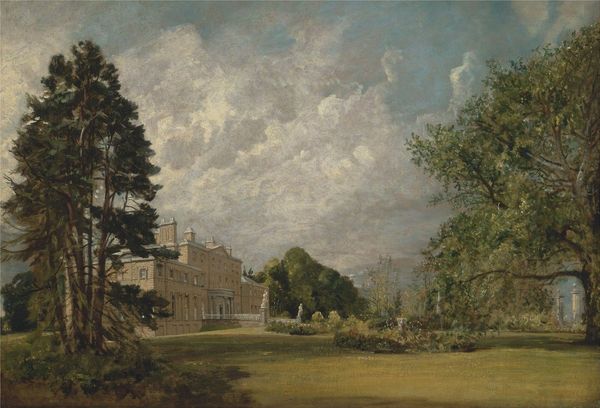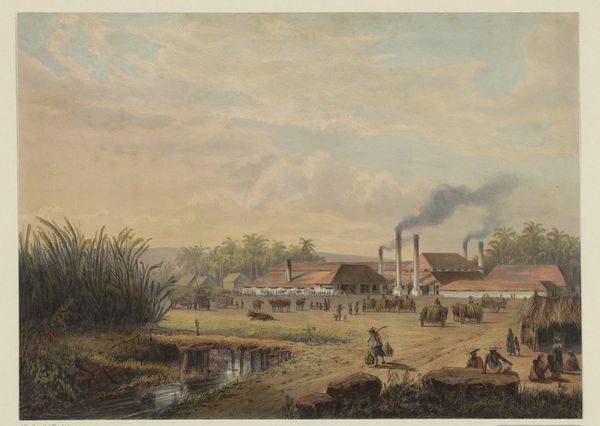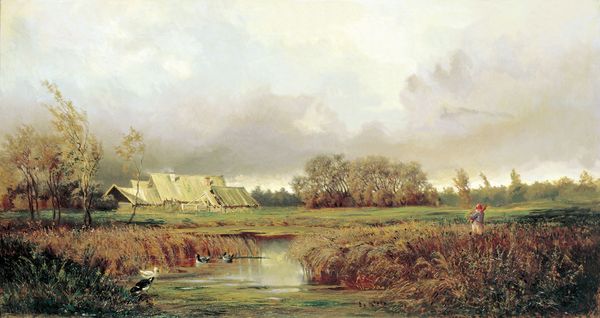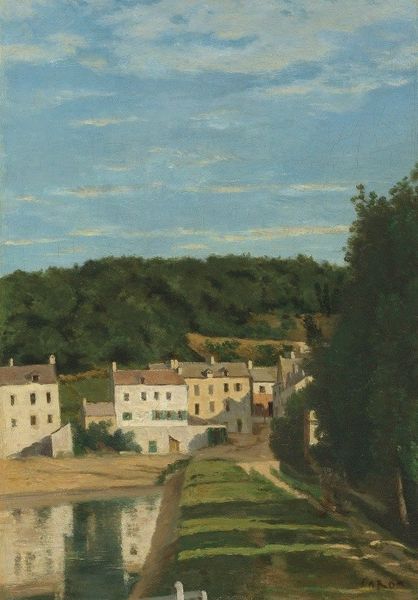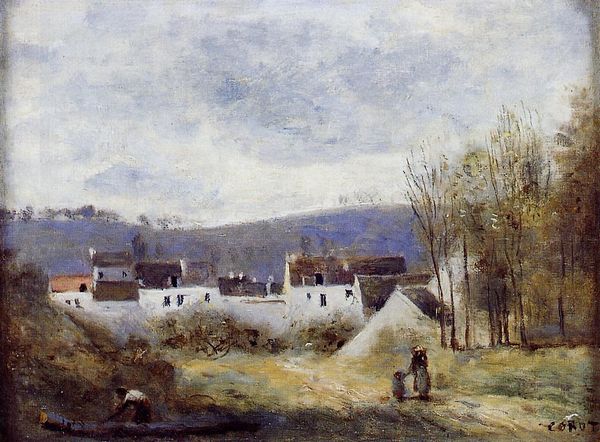
plein-air, watercolor
#
landscape illustration sketch
#
amateur sketch
#
plein-air
#
incomplete sketchy
#
landscape
#
charcoal drawing
#
possibly oil pastel
#
oil painting
#
watercolor
#
underpainting
#
romanticism
#
square
#
hudson-river-school
#
cityscape
#
genre-painting
#
mixed medium
#
watercolor
#
realism
#
environment sketch
Copyright: Public domain
Karl Bodmer made this watercolor painting, The Church of New Harmony, in 1832. It depicts a scene of utopian society that sought to reorganize social life around egalitarian, often religious, principles. The picture offers a visual record of New Harmony, Indiana. Founded by the Harmony Society and later the site of Robert Owen's secular experiment in communal living, New Harmony represents a unique moment in American social history. Bodmer, a European artist traveling in America, captured this settlement with a curious eye. He was documenting an attempt to create a new social order. His visual codes and composition invite us to reflect on the ambitions and realities of such projects. The attention to detail in the architecture and the surrounding landscape provide valuable insights into the material and social conditions of this community. By studying sources from the time like letters, pamphlets, and organizational records, we can understand the aspirations of the people who established the community. The art historian’s role is to reveal the complex interplay between the utopian vision and the social and institutional realities of 19th-century America.
Comments
No comments
Be the first to comment and join the conversation on the ultimate creative platform.
